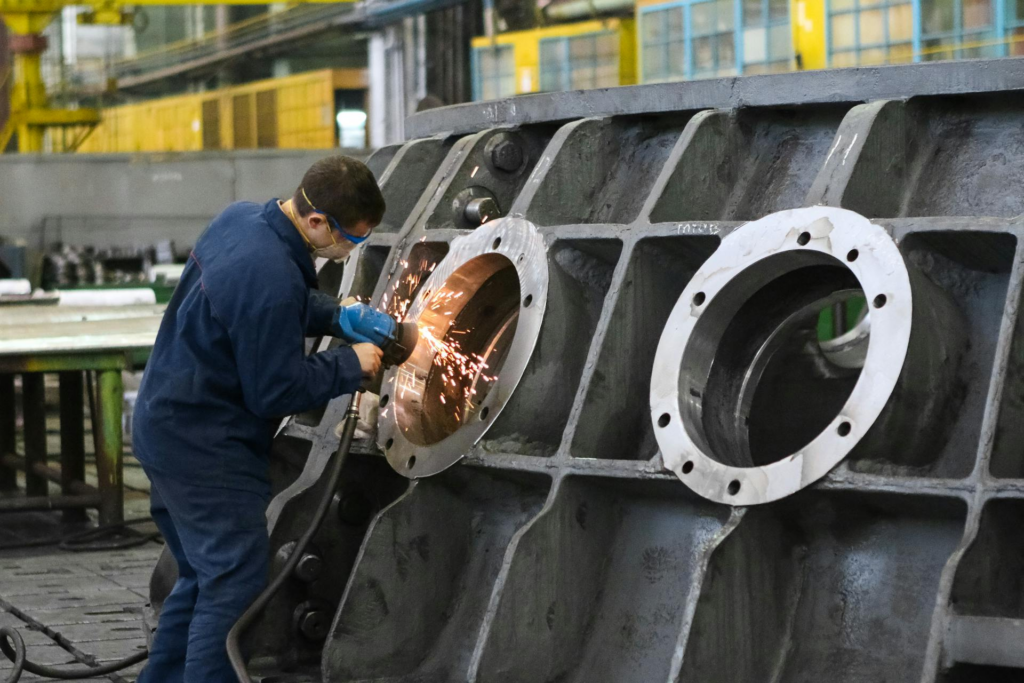You probably don’t need anyone to tell you that effective maintenance management is crucial for manufacturing facilities. Managing maintenance to ensure reliability in plant operations is no easy feat. And when you’re responsible for overseeing plant operations, you have a lot to consider.
This guide will explore 5 best practice strategies for managing maintenance and reliability so that you can improve practices in your facility and enjoy smoother and more reliable operations.
1. Develop Preventive Maintenance Schedules
Preventative maintenance (PM) is planned work that’s done to keep production running and avoid unplanned downtime. When a business carries out preventative maintenance, it services its machinery and equipment according to a schedule rather than when it fails. This type of maintenance includes inspections, testing, cleaning, and maintenance to ensure equipment remains in optimal working condition.
Adhering to a preventive maintenance schedule greatly reduces the likelihood of unexpected failures, which can be catastrophic for your business. It can also help businesses save money by extending the working life of equipment.
A PM schedule should be tailored to each manufacturing plant’s unique requirements. However, the key steps to creating an effective schedule are the same across most facilities. Here’s how to create a preventive maintenance schedule:
- Take inventory of assets: Include details such as make and model, serial number, parts, and location.
- Identify critical assets: Prioritizing assets based on factors like their importance in production, maintenance needs, repair and replacement costs, and chance of failure helps ensure all PM activities are for equipment that needs it.
- Establish optimal PM intervals: Determine ideal PM intervals for each of your critical assets. Some machinery will need a fixed or floating time-based schedule, where PM takes place after a set period. Other assets might trigger maintenance when they reach a set threshold, such as a specified number of operating hours.
- Schedule maintenance work orders: There are several ways to do this. Almost half of manufacturing facilities use spreadsheets, but computerized maintenance management systems (CMMS) can automate the process and streamline management of maintenance tasks.
- Monitor and fine-tune your schedule: Track key performance metrics, regularly review the impact your preventive maintenance efforts have, and listen to your maintenance technicians. Make changes as and when needed to keep your PM activities efficient and effective.
2. Implement Condition-Based Monitoring Techniques
Condition-based monitoring aims to detect when and where machinery requires maintenance by analyzing condition-based parameters. It’s a data-driven strategy that evaluates real-time data from various sensors. It provides a snapshot of your equipment’s health that allows you to anticipate maintenance needs and schedule work proactively.
Condition-based monitoring techniques include:
- Vibration analysis: Monitors vibration levels to detect misalignment, imbalances, and component deterioration.
- Oil analysis: Assesses lubricating oils for contamination, wear debris, and corrosion to maintain optimal performance and longevity.
- Thermography: Detects abnormal temperature variations that may indicate mechanical problems.
- Acoustic analysis: Listens to the noise machines produce to pinpoint abnormalities in functionality.
- Electrical monitoring: Examines critical electrical parameters to identify overloads and prevent equipment degradation.
To implement condition-based monitoring, you first need to determine which parameters to monitor. Then select appropriate monitoring technologies and set thresholds to detect deviations in these parameters, and alarms to alert maintenance teams to them. Many broader asset management platforms include built-in condition monitoring systems that enable you to do this.
3. Utilize CMMS Software
Computerized maintenance management systems (CMMS) are software designed to schedule, track, and monitor maintenance activities. CMMS software can consolidate maintenance-related data from numerous assets, automate schedules, track work orders, and generate reports.
Using CMMS helps you stay on top of maintenance tasks and get a deeper understanding of asset performance. Features such as advanced reporting can empower decision-making, drive continuous improvement in your maintenance practices, and maximize uptime in your facility.
4. Train Maintenance Staff
There’s little point in investing money and other resources into developing maintenance schedules, implementing conditional monitoring, and CMMS systems if you don’t properly train your staff on how to use them effectively.
Investing in regular training and ongoing skills development pays off in the long run. Well-trained workers who are up-to-date with the latest maintenance practices and technologies are an asset that can help you manage problems before they significantly impact production.
5. Implement Spare Parts Inventory Management Systems
In plant operations, efficient spare parts management is crucial for minimizing downtime. For a long time, managing your spare parts inventory meant manually organizing stock, keeping physical records, and picking up the phone to order parts you don’t have.
Digitalization has optimized these processes by enabling real-time monitoring and automation of inventory management. Today’s inventory management software can analyze your plant’s spare part usage and provide valuable insights, enabling you to further enhance efficiency.
Takeaway — The Importance of Managing Maintenance and Reliability in Plant Operations
Implementing the suggestions above can help minimize downtime, improve reliability, and increase your plant’s efficiency. However, effective maintenance management needs continuous improvement. So, once you’ve established a solid foundation with these practices, review their impact, seek feedback from your maintenance teams, and make adjustments to ensure optimal performance.
For more about plant operation procedures and insight into a wide range of industries, follow MRINetwork.

Connect with MRINetwork